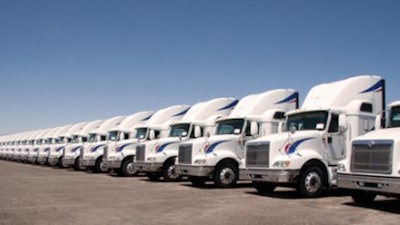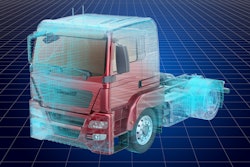
The automotive industry encompasses all companies and activities involved in the production of motor vehicles, including components such as engines and bodies, but excluding batteries, tires and fuel. And, the United States has one of the largest automotive markets across the globe. According to Select USA, in 2018, the U.S. sales of light vehicles reached 17.2 million units.
1. Autonomous vehicles: The ability to control without human intervention
Autonomous vehicles are anticipated to completely transform the way we commute on roads.
With robust financial assistance regarding continuous R&D and product innovations, many of the automotive players are likely to launch consumer-ready autonomous vehicles in the next 10 years. However, the Coronavirus disease (COVID-19) pandemic brought disruption in supply chains and restrictions in the movement of people and goods, which resulted in partial or complete stoppage of the research/testing activities. Post-pandemic, the autonomous vehicles segment is much anticipated to bounce back and re-set to its ongoing activities.
2. Maglev trains: The demand for faster transport systems across the world
Maglev (magnetic levitation) trains make use of electromagnets for their levitation to generate the push that moves the train at high speeds. In comparison with conventional trains, maglev trains have superior controls, as their acceleration and braking systems aren’t based on the friction of the railway track.
The demand for faster transport systems is rising in several nations across the world. However, the COVID-19 pandemic created adverse economic conditions across the world. Several governments are pouring in huge investments to aid the healthcare systems and reducing investments in other segments. With the COVID-19 vaccine on the horizon, disruptions in supply chains and restricted movement of goods and people are expected to resume over the next months, while the initiatives for driving the developments of Maglev trains will resume.
3. Autonomous last-mile delivery: Self-driving vehicles to supplement the need for contactless last-mile delivery services
Online retail sales are expected to register tremendous growth while the e-commerce sector is projected to record 15% of the total retail sales in 2020. During the pandemic, online sales of existing players are expected to register 10-15% growth in Europe, followed by 35% growth in China in 2020. Similarly, companies have made investments toward self-driving vehicles to supplement the need for contactless last-mile delivery services.
With the breakthrough in vaccination and when the situation is under control, last-mile delivery will certainly not look the same as the companies are preparing for innovation shift after restrictions are lifted to rapidly assess and adapt their supply chains. Such types of innovations have also enabled key players in the autonomous last-mile delivery industry to come up with different techniques to increase business during and after the pandemic.
4. Additive manufacturing: Producing components with complex geometric designs
Additive manufacturing (AM), otherwise known as 3D printing, is an innovative approach to industrial production that facilitates the manufacture of stronger and lighter components and systems. Additive manufacturing makes use of computer-aided design (CAD) software or 3D body scanners to command hardware to deposit layer upon layer material in particular geometric profiles. In contrast to the traditional manufacturing processes, which involve removing material through machining, milling, shaping, carving or other means, additive manufacturing adds the material to create an object. It outclasses all other manufacturing processes in producing components with complex geometric designs, and is widely used in creating aerospace parts, automotive components and 3D-printed clinical implants for patients and other industries.
The potential applications of additive manufacturing are being acknowledged across a number of different industry verticals. In developed nations, where conventional manufacturing has observed a huge decline, the advances in additive manufacturing offer valuable prospects for growth. Pre-COVID-19 developments and adoption for 3D printing were aimed at large-scale implementation of 3D-printing manufactured goods. The pandemic caused widespread supply chain disruption and led to the delay in progress related to additive manufacturing. The post-pandemic period is expected to give a push to the developments related with the additive manufacturing market.
5. Micro-mobility: Offering urban transportation
Micro-mobility is a class of lightweight transportation automobiles designed for personal use. Vendors active in the micro-mobility market space are focusing on offering urban transportation that weighs less than 500kg. Electronic scooters, e-bikes and electric skateboards are some of the examples of micro-mobility technologies, which have become practical in metropolitan cities on account of the rising demand for a practical solution for short-range transportation (less than 8km).
Big tech companies are focusing on the opportunity that micro-mobility transportation offers by creating the software and cloud services required to facilitate the personal and shared micro-mobility start-ups.
6. Solar-powered cars: Major breakthrough in the automotive sector
Solar cars are battery-powered cars that use solar power as their energy source. Solar-powered cars can be a major breakthrough in the automotive sector, acting as a carbon-neutral, energy-efficient solution. Several automobile players are working toward developing viable solar cars and building solar car kits, which can help cars travel longer distances using solar energy.
The automotive industry has faced adverse impacts, owing to border closures, local lockdowns and the consequent disruption in supply chains. China and India are the major hubs for manufacturing automotive parts across the world, but the pandemic led to severe obstacles in the supply of parts. The restrictions in movement of people and materials hampered the industry and led to reduced demand for automobiles. Delays in shipments are being observed across the world. This is impacting solar car production. Cost-effective mechanical and electronic components used in making solar-powered cars are made in Asia, and the adverse pandemic conditions have resulted in the delay of shipments. The post-COVID-19 scenario will give an impetus for the growth of the market, owing to the rising demand for zero-emission, energy-efficient automobiles globally.
7. Flying taxis: Short flights on demand
An air taxi is a small-sized commercial aircraft that makes short flights on demand. Flying taxi is expected to be a third dimension in the urban transportation matrix. Attributed to the rapidly increasing urbanization across the globe, the rising demand for quicker modes of transportation is anticipated to be one of the major factors attributing to the fast growth of the market. For journeys more than 20 kilometers, flying taxis can emerge as an attractive substitute to a conventional taxi as it can avoid crowded roadways. Big funding rounds are being carried out by the key market players to make superior battery technologies that can be fitted into an air taxi.
The COVID-19 pandemic resulted in the delay in R&D and other related initiatives in the development of flying taxis worldwide.
8. Hoverbikes: To reach highly inaccessible areas
Hoverbikes are bikes that can fly, and can be immensely useful in search and rescue, aerial surveys, wildlife and parks, powerline inspection and military and emergency applications.
The launch of hoverbikes in the coming years can offer several advantages. For instance, the hoverbike would be able to reach some highly inaccessible areas for vehicles running on roads and helicopters. It can also be useful for proving supplies in cases of emergency, and used to carry out rescue missions in an effective manner. These factors are driving the growth of the hoverbikes market. However, the COVID-19 pandemic adversely impacted growth, resulting in the delay in R&D and other related initiatives in the development of hoverbikes worldwide.
9. Predictive vehicle technology: The advent of machine learning in automotive industry
Predictive capabilities are becoming quite prevalent in modern cars, which help in personalizing and enhancing the driving experience. Artificial intelligence (AI) and machine learning (ML) are expected to play an important role in transforming the automotive industry. A rising number of manufacturers are making use of algorithms that use data to automate the method of setting up a vehicle, which includes a car’s infotainment system and its preference for applications. Today, more and more vehicles are incorporating Internet of Things (IoT) technologies that can easily connect with smartphones and respond to voice commands, thus improving the user interface. Predictive vehicle technology can also be very useful in the form of superior sensors installed in a car that informs the driver/owner of the car that requires the service. Depending on the car’s condition, the technology will be able to notify users of any safety threats linked with a faulty part or component, set up service appointments in real-time and estimate its performance.
The advent of ML in the automotive industry, excessive usage of real-time data for vehicular applications and the emergence of self-driving cars are anticipated to bolster growth of the predictive vehicle technology market over the years. However, the COVID-19 pandemic resulted in the delay in R&D, testing and other initiatives in the development of predictive vehicle technology worldwide.
10. Cars-as-a-service (CaaS): Offers flexibility to customers
The Cars-as-a-Service (CaaS) model is an enhancement over the existing car rental model. The agreements bind customers with cars for very long periods of time. In addition, the lease period established at the commencement of the lease is fixed and any alterations made to the lease result in severe penalties and monetary losses from the customer’s point of view. On the other hand, the CaaS model offers flexibility in the hands of customers, who can modify and upgrade their cars as and when they require. Similar to lease agreements, the subscription to a car does not bind the customer for a long timeframe. Customers can opt for cars on a month-to-month basis.
CaaS model will basically transform transportation for those living in cities and use public transportation and rideshare services quite often. And, it has gained wide attention in the automotive sector with regards to providing luxury subscription plans.
Furthermore, COVID-19 adversely impacted the CaaS market as the demand for car rental service slumped to its lowest level. However, the model is robust and attractive, and is anticipated to gain momentum in the coming years.
















